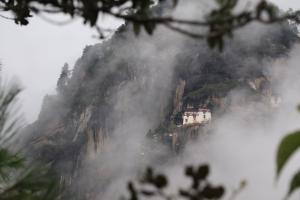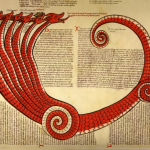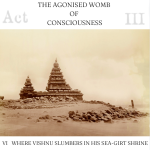The theory that Jesus spent his “lost years”—the time between his childhood and the beginning of his ministry, about which the New Testament says very little—in India, Tibet, and Nepal, is a subject of great fascination and controversy. This hypothesis fills in the gaps of Jesus’ life that the Bible does not account for, typically between the ages of 12 and 30.
The New Testament’s gospels provide little information about Jesus’ life during this period, leading to speculation and legend about what he might have been doing in those intervening years. One of the most intriguing theories is that Jesus traveled to India, and perhaps Tibet and Nepal, immersing himself in the philosophies and teachings of the East. I was recently in Nepal doing work with non-profit Choice Humanitarian and tried to imagine young Jesus toggling between Buddhist Stupas and Hindu Temples in search of the Great Mystery.
This theory (in its modern form) largely stems from a 19th-century Russian traveler and writer, Nicolas Notovitch, who claimed to have found evidence during his travels in India. According to Notovitch, a manuscript in a Tibetan monastery in Ladakh detailed the arrival of a holy man, named Issa (a name linked to Jesus), who matched Jesus’ description and teachings. Notovitch published his findings in a book titled “The Unknown Life of Jesus Christ,” which sparked immediate controversy and skepticism among scholars and theologians.

Despite the lack of concrete evidence, proponents of this theory argue that the moral and philosophical similarities between Jesus’ teachings and Eastern traditions suggest a link. They point out that principles such as compassion, non-violence, and the idea of overcoming the ego are central to both Christianity and Eastern religions like Buddhism and Hinduism.
Critics of the theory argue that Notovitch’s accounts were either fabricated or grossly misinterpreted. Scholars note that historical evidence for Jesus’ presence in India is virtually non-existent and that the New Testament provides sufficient detail about Jesus’ life and ministry. They also point to the cultural and religious milieu of Judea and the surrounding regions to explain the origins of Jesus’ teachings.
Additionally, some theologians argue that the theory undermines the traditional Christian understanding of Jesus, suggesting that it implies he was influenced by human teachings rather than being the divine source of new revelation. They also express concerns about appropriating Eastern religious concepts to fill in the gaps of the Christian narrative.
Despite the debates, the theory remains a part of popular discourse, inspiring books, documentaries, and even pilgrimages to sites in India and Nepal that some believe Jesus may have visited. For many, the exploration of this theory is not just about historical facts but about the universal appeal of Jesus’ message and the shared human desire to find common ground among the world’s religions.
Proponents of the theory include members of the Theosophical Society, particularly its founders Helena Blavatsky and Henry Steel Olcott, who are known for their esoteric beliefs and claims of ancient wisdom. They, along with others in the society, have been linked to the propagation of the idea that Jesus studied in the East, with some claims suggesting that there are records or manuscripts in Tibetan monasteries that support this theory. The Theosophical Society has been influential in promoting various mystical and esoteric concepts, including those that relate to the life and teachings of Jesus outside of the canonical Christian texts.
Revered spiritual teacher and the author of “Autobiography of a Yogi,” Paramahansa Yogananda, held a view that connects the life of Jesus Christ with Eastern spirituality. According to Yogananda, Jesus spent many of his formative years in India and Tibet, where he studied the ancient teachings of yoga and meditation. This perspective suggests that during the so-called “lost years” of Jesus, not accounted for in the New Testament, he was immersed in learning from sages and gurus, gaining profound wisdom that later influenced his teachings. Yogananda’s teachings propose that there is a deep, spiritual link between the teachings of Jesus and the universal truths found in Eastern traditions, asserting that the unity of all religious philosophies is centered around a direct personal experience of God. This idea, while not widely accepted in mainstream Christianity, offers an inclusive and intriguing bridge between Eastern and Western spiritual paths.

In 1959, Sri Daya Mata, who led the Self-Realization Fellowship which Yogananda founded, traveled to India and conversed with a distinguished Indian spiritual figure, His Holiness Sri Bharati Krishna Tirtha, the Shankaracharya of Puri. During their dialogue, Sri Daya Mata brought up accounts she had heard, suggesting that Jesus had spent a portion of his life in India, engaging with its enlightened sages. His Holiness confirmed these assertions, stating he had personally examined ancient documents housed within the archives of the Puri Jagannath Temple which corroborate this narrative. According to these records, Jesus, referred to as “Isha” in these texts, resided for a time within the Jagannath Temple itself. It is asserted that upon his return to his native region, he shared the teachings which would later form the foundation of Christianity.
In the end, the theory of Jesus’ lost years in India, Tibet, and Nepal remains speculative, although not without some intriguing historical proof. It continues to be a subject that captures the imagination, inspiring both spiritual reflection and scholarly debate. The idea challenges believers and skeptics alike to consider the mysteries of a time long past and the possibilities of intercultural exchange and spiritual growth. As for myself, I like to think of the young Jesus wandering the Himalayas in search of God-realization. He clearly found it.








